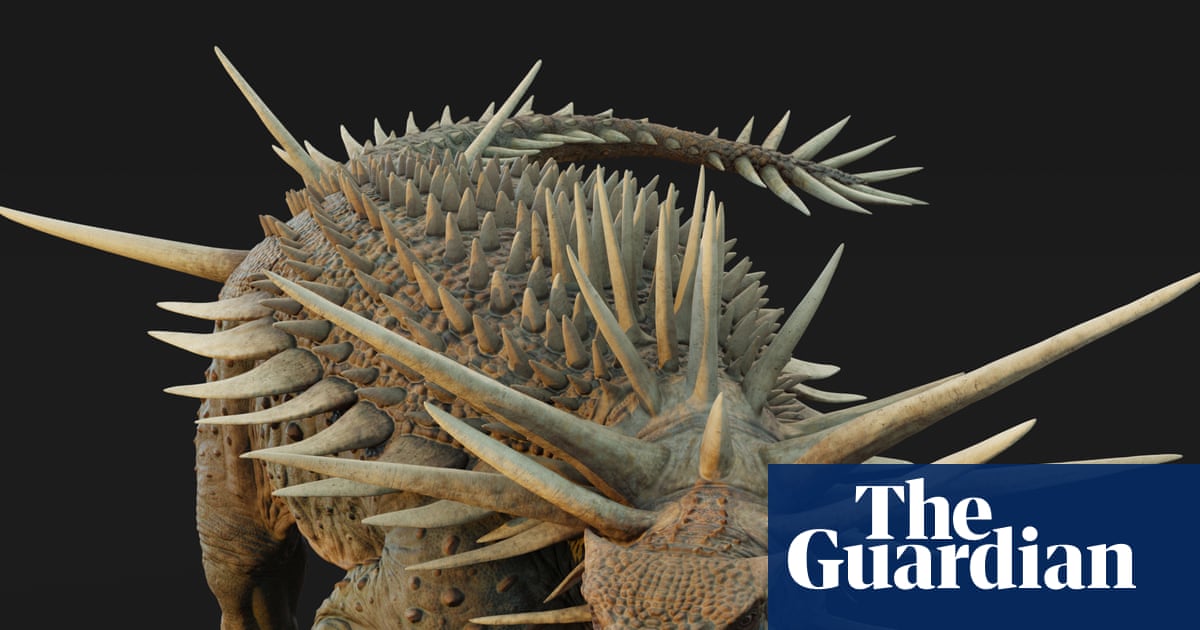
"Tank-like physique, bristling with body armour and a collar of spikes the length of golf clubs, Spicomellus afer looks more like a Pokemon creation than a living creature. This bizarre dinosaur roamed the flood planes of what is now north Africa 165m years ago, palaeontologists have revealed. The fossil, the oldest known ankylosaur specimen, was unearthed near the central Moroccan town of Boulemane."
"It's absolutely bristling with spikes all over its body, said Prof Richard Butler, of the University of Birmingham and the project co-lead. It has these incredibly distinctive spikes around the neck an armoured collar that is absolutely enormous and totally out of proportion to the rest of the body, smaller spikes projecting out of the ribs, and at the end of its tail it would have had some kind of weapon."
"The dinosaur's anatomy was so outlandish that piecing together the body plan from the incomplete jumble of fossilised bones was not an easy task. We put all the armour out on a table and tried to figure out where, most logically, it would fit, said Butler. Academics investigate the armour of the specimen. Photograph: Lucie Goodayle/The Natural History Museum, London Ankylosaurs span the mid-Jurassic to the late Cretaceous epoch, when an asteroid crash-landing wiped out the majority of species, and are characterised by a squat, slow-moving and heavily armoured physique."
Spicomellus afer was a tank-like ankylosaur that lived on floodplains in what is now north Africa about 165 million years ago. The Boulemane fossil represents the oldest known ankylosaur and shows extravagant armour including a collar of long neck spikes, smaller rib spikes, and a probable clubbed tail. The specimen measured about 4 m and weighed around two tonnes. Its unusual neck collar and scattered armoured elements challenge existing ideas of ankylosaur evolution and made reconstruction difficult from incomplete, jumbled bones. Ankylosaurs were squat, slow-moving, heavily armoured herbivores that persisted from the mid-Jurassic to the late Cretaceous.
Read at www.theguardian.com
Unable to calculate read time
Collection
[
|
...
]